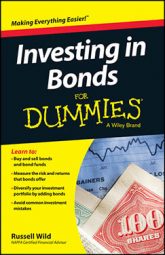You first choose a bond category: Do you want a Treasury bond, an agency bond, a corporate bond, or a municipal bond? What kind of rating are you looking for? What kind of maturity? What kind of yield?
Most online bond shops walk you through this process step by step; it isn't that hard. The most difficult piece of the process is making sure that after you know what kind of bond you want, you get the best deal on your purchase.
Here, plain and simple, is how you get the best deal for a given type and quality of bond: You want the highest yield. The yield reflects whatever concession you're paying the financial supermarket, and it reflects whatever markup you're paying a broker.
Comparing yields, however, can be tricky, especially when looking at callable bonds, because you never know how long you'll have them. Keep in mind that in the past, when interest rates were falling, callable bonds were almost always called because the issuers could issue newer bonds at lower interest rates. In the future, that may not be the case. So you need to look at two possible scenarios: keeping the bond to maturity, or having it called.
As David Lambert, founding partner of Artisan Wealth Management in Lebanon, New Jersey, suggests, "When considering callable bonds, be sure to examine whether the bonds are selling at a premium or a discount to the call price. If trading at a premium, consider the yield-to-call first. If trading at a discount, consider the yield-to-maturity first. Both of these will give you your most realistic picture of future performance. You can pretty much ignore just about everything else," says Lambert.
What he is saying is that the yield-to-call on premium bonds and yield-to-maturity on discount bonds both represent yield-to-worst (or worst-case basis yield). That yield is what you're likely going to get, so you may as well factor it into your bond purchase decisions.
If two comparable bonds — comparable in maturity, duration, ratings, callability, and every other way — are offering yields-to-worst of 4.1 percent and 4.2 percent, unless you have an inside track and therefore know more about the issuer than the ratings companies do, go with the 4.2 percent bond. Just make sure you've done your homework so you know that the two bonds are truly comparable.
Fidelity has a neat tool on its website called the scatter graph; it allows you to see a whole bunch of similar bonds on the same graph and what kind of yield each is paying. Click on Investment Products and then Fixed Income and Bonds. Get into Individual Bonds and then select the type of bond you're interested in purchasing. Enter your parameters to create the scatter graph you need.
To reiterate: The yield reflects the middleman's cut. Focus on the yield, and especially on the yield-to-worst, to get the best deal. Don't over-concern yourself with the bid/ask spread on the bond.
When you go to place your order, use the "Limit Yield" option. You are telling the brokers on the Fidelity network that you'll buy this bond only if it yields, say, 4.2 percent. Anything less, and you aren't interested. Putting in a "Market" order on a bond can get you chewed up — don't do it.

